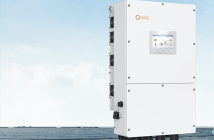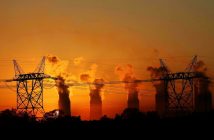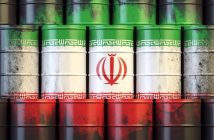- Huawei brings to the market its latest-generation solutions for solar PV architecture, featuring not one but three new devices, which are designed to work together in a rather unique and intelligent fashion.
- The result is dramatic cost saving on the BoS side and much improved whole-system efficiency.
Making photovoltaics fit for taking its role as the mainstream source of power – that is the task Huawei gave itself with its new FusionSolar 8.0 solution, with its Gemini architecture.
The system comprises three new components designed to reduce the electrical balance-of-system cost and to fully utilize the advantages of centralized and decentralized plant architectures. First, instead of a traditional string inverter, Huawei offers the Venus 2000-32-U0 smart string controller, which is a DC-DC converter stage with 8 MPPTs. The device is installed near the modules at the tables. Second, the Smart PV Controller, SUN 2000-345KTL-H0, is a DC to AC inverter clustered around the substation or storage battery. Finally, on top, comes the highly anticipated, 2 MWh Luna 2000-1/2-S0, fully pre-fabricated, containerized storage solution.
Instead of using traditional string inverters at each table, this solution uses DC-DC converter stages, the smart string controller, near the modules. “We basically carved out the DC-DC converter from our inverters,” says Hariram Subramanian, CTO of Smart PV in Europe at Huawei. The DC to AC conversion stages are located centrally around the substation and the optional storage container.
This type of system architecture allows to reduce the electrical balance-of-system costs significantly, by €0.01 per watt. Moreover, by only performing the DC-to-DC conversion and MPP-tracking at the table, this bipolar DC transmission design enables transmission of energy through DC cables. This lowers overall cabling costs and will also reduce transmission losses. Finally, with such an architecture, it is possible to add storage on the DC side of the project. A feat that improves round-trip efficiency and is thus the favored way of adding storage – but also one that hitherto could not be done in combination with string inverters.
Also, for the battery storage part, Huawei has come up with a range of innovations. For example, the battery container comes with a capacity of 2 MWh. Fitted inside a 20-foot shipping container, lithium-iron-phosphate batteries come pre-installed and connected to their respective power electronics. This competitive LFP battery solution rivals nickel-manganese-cobalt-based systems and the chemistry is known to show a high level of thermal stability.
The storage system features a whole range of power electronics to improve the entire system’s cost and availability. In addition, the racks can be controlled individually, offering a modular approach for optimal system utilization. By separately managing the racks rather than the whole packs, Huawei says it can increase the charge and discharge capacity by around 15% compared to a solution that relies on a centralized battery management system. On top of that, it can manage the mismatch between packs much better and determine the state-of-charge at high granularity. And that improves the lifetime of the battery.
In an array of, let’s say, 100 MW, Huawei says there is an advantage of arranging inverters, substations, and storage containers in blocks of 8.8 MW each. “If you were to cluster it around blocks of 100 MW, for example, you would need a lot of low-voltage cabling,” says Subramanian. He continues to explain that even with Huawei’s bipolar DC transmission system, it is better to use medium-voltage cabling for long-distance transmission to save on transmission losses and cable costs. So instead of having one substation and all the inverters and storage in one place, Huawei says it is better to have 12 substations and inverters cluster in a field of 100 MW.
Another highlight of the new solution is the ability to supply virtual inertia. Inertia in an electric system is a power system’s ability to compensate for sudden voltage drops and subsequent frequency deviations. If the load in a network is not perfectly aligned with the supply, the system’s voltage drops, decreasing the frequency. When the rate of change of a frequency deviation becomes too large – less than half a Hertz is enough – the network’s security system is triggered, and whole parts of a power grid will be islanded, causing widespread power outages. In a traditional power system, the large rotors inside thermal generators can compensate for the effect to some degree as the large rotor is subject to physical inertia and won’t change its rotational speed very suddenly.
When a power system features more than 30% of power electronics interfaced generation methods, there could be a risk of too little inertia being left in the grid to compensate for very sudden load changes. Therefore, in preparation for assuming the position as the mainstream power source, Huawei gave its inverters the ability to supply virtual inertia.
Though real inertia comes instantaneously, it is good enough to supply the voltage, and hence frequency, injection within one second. “Already we see a market for this grid stability application in Ireland, and the United Kingdom, but also in Finland and the Nordics, and in Australia,” says Subramanian. He believes these abilities could become mandatory requirements in other markets in the near future.
Author: Bryan Groenendaal











